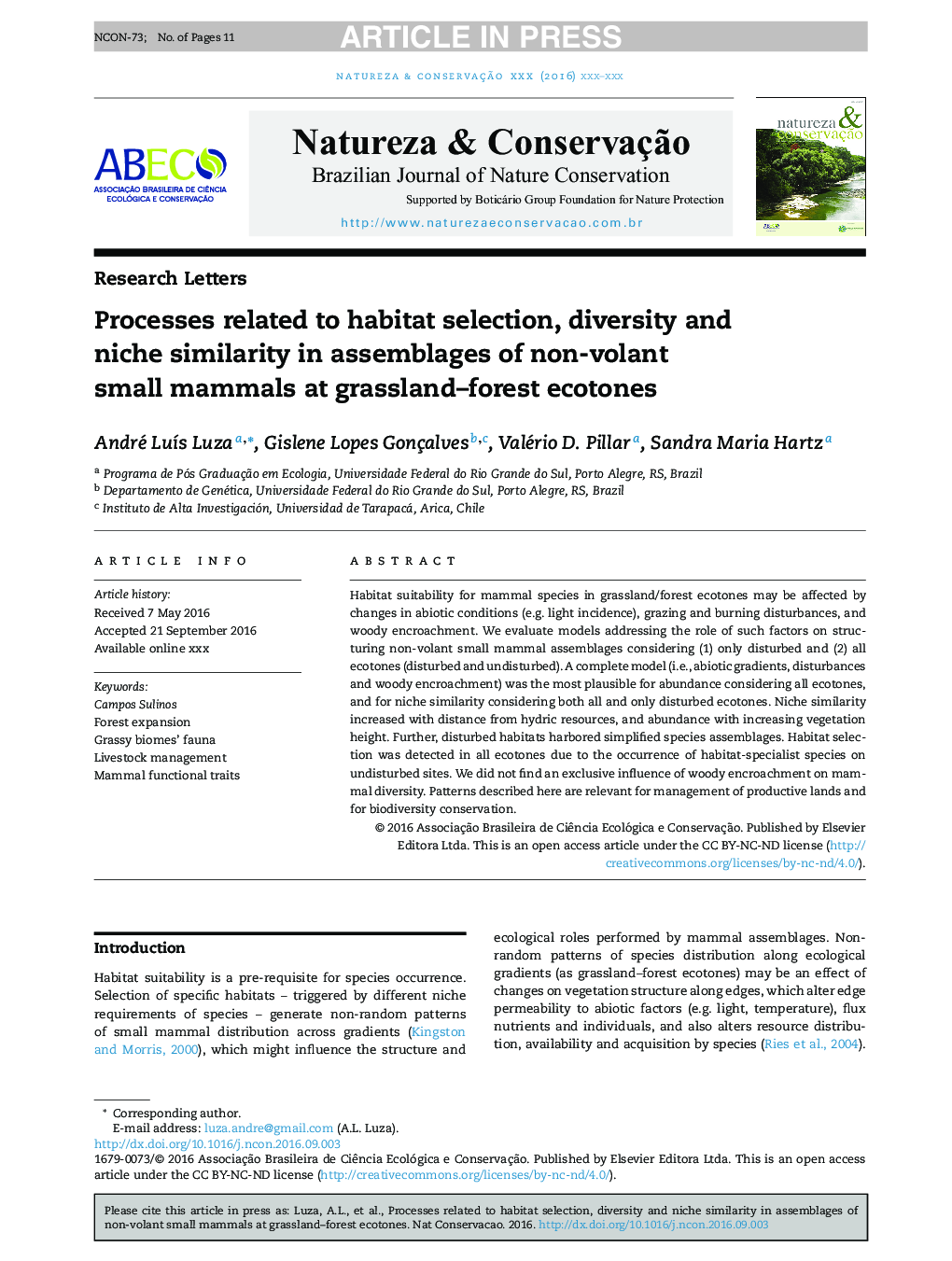| Article ID | Journal | Published Year | Pages | File Type |
|---|---|---|---|---|
| 8849449 | Natureza & Conservação | 2016 | 11 Pages |
Abstract
Habitat suitability for mammal species in grassland/forest ecotones may be affected by changes in abiotic conditions (e.g. light incidence), grazing and burning disturbances, and woody encroachment. We evaluate models addressing the role of such factors on structuring non-volant small mammal assemblages considering (1) only disturbed and (2) all ecotones (disturbed and undisturbed). A complete model (i.e., abiotic gradients, disturbances and woody encroachment) was the most plausible for abundance considering all ecotones, and for niche similarity considering both all and only disturbed ecotones. Niche similarity increased with distance from hydric resources, and abundance with increasing vegetation height. Further, disturbed habitats harbored simplified species assemblages. Habitat selection was detected in all ecotones due to the occurrence of habitat-specialist species on undisturbed sites. We did not find an exclusive influence of woody encroachment on mammal diversity. Patterns described here are relevant for management of productive lands and for biodiversity conservation.
Keywords
Related Topics
Life Sciences
Agricultural and Biological Sciences
Ecology, Evolution, Behavior and Systematics
Authors
André LuÃs Luza, Gislene Lopes Gonçalves, Valério D. Pillar, Sandra Maria Hartz,
